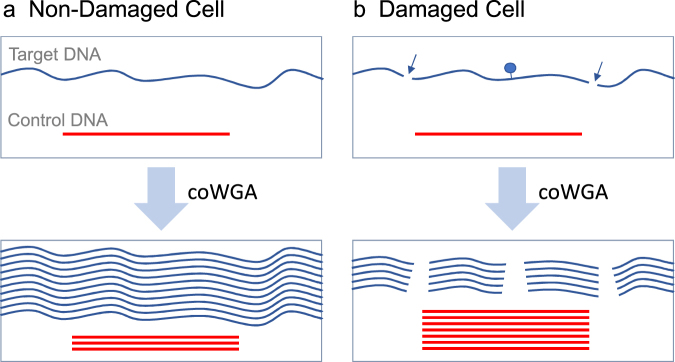Figure 1.
Competitive whole genome amplification (coWGA) of Control-DNA (red line) and single cell DNA (blue line). (a) In non-damaged cells, the double-stranded DNA is mostly intact and does contain very few blocking sites. Here, cellular DNA is longer than Control-DNA. In this case, the amplification of the large, unbroken double-stranded DNA out-competes the amplification of the Control-DNA. (b) In damaged cells, genomic DNA may have multiple breaks (arrows) and sites blocking Phi29 polymerase (blue dot). As a result, the amplification rate is reduced and the large sized Control-DNA outcompetes the amplification of the low quality cellular DNA. A high amount of Control-DNA indicates a low quality of cellular target DNA and vice versa.

